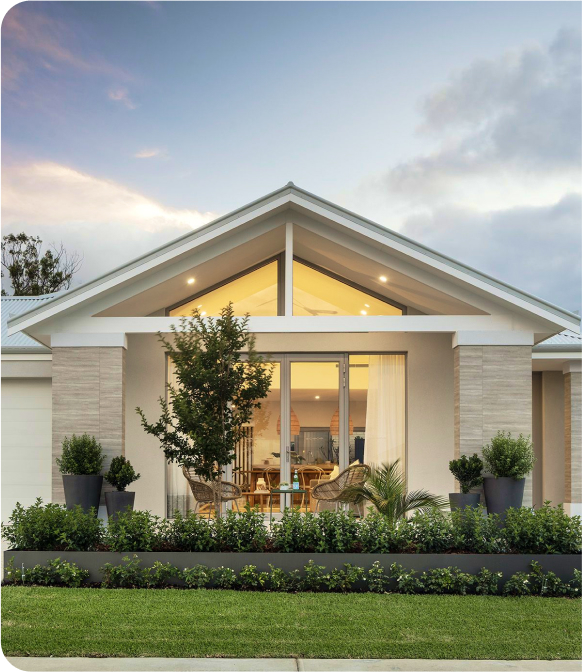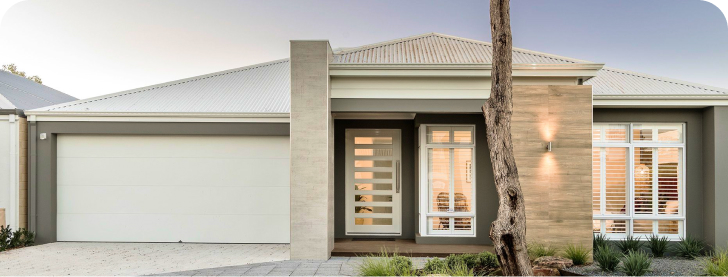
An accessory dwelling unit is a small additional house on the same property lot as your main residence. They come in a variety of layouts, from inter-house ADUs and wall-attached ADUs to completely separate and self-sufficient ones.
Why build accessory dwelling units? After adding these all-amenities constructions to their property, homeowners can enjoy more space for family members (a senior or a grown-up college student), longer stays for friends from faraway locations. They can also enjoy getting the extra income from long-term rental and short-term rental options, as well as increased value on resale.
Read this article further to learn more about factors that affect your rental income and what pricing strategy to pick for a vacation rental and other short-term rentals.
To make more money, let your price revolve around actual supply and demand. What you need to be aware of short-term rental market changes and raise your profit is a comprehensive research of your local area.
In order to make your vacation rental pricing strategy more dynamic and adaptable, you should take the following factors into consideration:
Deteriorating weather can greatly affect demand and get your advance bookings canceled. So, if you plan ahead and check the weather forecast, you may reduce your nightly rate to entice renters to stay. While good weather means you can charge higher rates than your guests will pay.
Peak season costs are always higher than times with less demand. Different prices derive from an influx of guests, and this is usually the time when you can make the greatest profits. Yet, if you see many short-term rentals in your ADU housing calendar, here you can resort to one trick: lower the prices in the middle of the week. This will hopefully make your bookings longer and allow you to earn more.
To get a feel for what your pricing strategy should look like, you are to regularly analyze market data. If other ADU owners, hotels, and motels drop their costs, you will have to follow the trend to avoid the risk of losing all your guests.
You can calculate these dates manually and adjust your prices accordingly. Or you can use digital dynamic pricing tools that do the calculations for you. Their advantage is that they are more precise and save time.
Short-term rentals during the hot season can bring you significant wealth at once. However, rental property owners often follow suit with hotel price policy: they raise prices during sought-after dates and reduce them in less crowded seasons.
For example, in the majority of locations, the most popular months are from May to September. So it makes sense to reduce renting costs for the period from October to April to lure at least some customers. Also, such holidays as Christmas affect your pricing calendar. Even short stays during this time are in great demand for people from hotter regions who want to see snow or city decoration.
Festivals, concerts, and other cultural events also bring new guests to the local market. Check out the visitor's bureau website and blog post to note all mass activities for the near future to distribute price rises and falls correctly and strategically.
In times when the tourist influx is smaller, you need to boost the demand for your particular ADU property. So, what are effective ways to do so when objective factors play against you?
Rent out your ADU using such tools as:
When you give customers discounts, you generally increase occupancy, which is absolutely vital in unpopular seasons. For example, if you offer a 15-20% discount, your ADU will become affordable for wider segments of society, resulting in your ADU being completely booked.
ADU homeowners can set higher prices for Saturdays and Sundays, lowering them on workdays and making it the cheapest in the middle of the week. This way, guests who can come on weekdays can take weekdays instead of occupying ADU for always busy weekends.
Offer a price reduction for longer stays, especially during off-season periods. For example, if your guest booked the second part of the week except for the weekends, you can offer them a small discount to prolong their vacation.
By creating smaller booking periods, you make guests feel as if the number of places is very restricted and facilitate last-minute bookings that bring way more revenue.
Sometimes the location of your ADU property plays a crucial role in determining visitors' interest. Big cities that allure many guests from all over the world (like Los Angeles, New York, San Francisco, etc.) don't even need peak season to replenish property owners' income balances.
But what about rentals in smaller towns and communities? A cozy rental house in the suburbs or in a less famous area is not devoid of the potential to bring you good revenue in several cases:
When drawing up your offer, name the most interesting local facilities, spots for beautiful photos, as well as other places for entertaining or a peaceful vacation that your target audience is seeking.
It's not a secret that big events affect the local market. When a famous group of musicians or other performers arrives at your location, they bring a whole crowd of people who need to spend the night or a couple of nights somewhere. It leads to a rise in short-term rentals that results in a heightened nightly rate.
Thus, to foresee such events and get ready for them, preliminary research is simply unavoidable. Homeowners are to make sure their ADU is clean and prepared for the accommodation of new guests and set a higher rate in advance before the hype begins. It can be a bit tedious, but your effort and investment will be worth it.
To adjust your vacation rental pricing strategy effectively, you need to understand the local business market. How many of them are there in your area who are willing to offer short-term rentals? What other competitors offer: what amenities, what service level? How popular is your area for bookings? All of these questions constitute competitive analysis.
Its conducting is essential for the following reasons:
Typically, the more convenience you bring into the ADU guest's daily life, the more they are willing to pay for the stay. It may seem that fully equipped kitchens are in demand only when it comes to rentals on a long-term basis. But in reality, many people prefer to have the opportunity to live the way they lived in their own houses.
By installing more amenities in your ADU, you gain superiority over competitors. Offering something unique and compelling, such as a gym, home theater, or pool with loungers, you also get a chance to get more profit from those who want to enjoy a luxurious life, at least on vacation.
And last but not least, comfortable conditions lead to prolonged bookings. With a speedy Internet connection, well-furnished rooms, laundry, and other necessities, your guests don't have the incentive to come to a more comfortable home. And the longer they stay, the bigger the profit you get.
ADU owners usually set a higher price for a short vacation (1–3 days) than for a longer one (4–7 days or even longer). The reason for this is that weekly stays are more beneficial for rental businesses because you spare operational costs for frequently turning over the ADU, cleaning it up, and preparing it for new clients. Moreover, owners have their rental ADU occupied and receive a steady income, avoiding vacant days or weeks.
So, how do you encourage longer stays?
Using these dynamic pricing tool options wisely, you can fill all the gaps between your stays and get the most out of your possible income.
The most obvious pattern between price and reviews is that with better reviews on your rental property, you can set higher rates. As you gain popularity, the more appreciation your former guests show, the more in demand your ADU becomes among newcomers.
Another advantage of engaging in rating systems is that potential guests can compare you with other rental properties on the market. If your feedback is good and great, it gives you leeway to set higher vacation costs, and people will still pay them.
Any vacation rental pricing strategy should take rental property feedback into account, as it gives customers a sense of what service level to expect and the owner a sense of what price they will be ready to pay.

A well-planned dynamic pricing strategy implies the use of discounts and promotions as a means of attracting guests. Property owners resort to discounting when they need to beckon guests during unpopular seasons and after sudden cancellations so that the property does not stand idle.
Discounting does you a favor when your aim is to be in marked contrast to neighboring vacation properties. By showing you're more liberal with costs, you can improve your vacation rental property's reputation and foster prolonged stays.
Customers like freebies. So don't hesitate to reduce your price a little when it means drawing in more guests. Even if your factual charge per night is less, with longer guests' vacation lengths, your ultimate gain will be the same or even more than it could be without discounts.
In contrast to long-term rentals, which have almost no limitations, some states and cities have banned short-term rentals for the sake of community comfort. Some places restrict the uses of vacation rental property or the number of days you can rent it out; others allow them only when the owner lives on the plot of land. Thus, when building a new ADU house, rules and regulations are what you have to check first.
As far as rental pricing is concerned, the rate reduction is a means to drive in new customers or incite the existing clientele to choose longer and more frequent stays. Though typically, you do that in frames of promotions or as a bonus to loyal guests, rental property owners also reduce prices for unpopular seasons and dates to avoid a complete vacancy.
When you publish your ad, make sure to include a precise description of your property, its main advantages (services, location, discounts, and so on), and complimenting pictures. On the stage of guest arrival, put some effort into creating a warm welcome: give a tour around your ADU and show special amenities (a pool, a playground, or others). Also, you can offer to give a small tour around the neighborhood, showing interesting places and providing entertainment to the guests. And as your guests leave, ask them to rate your property on a website or write a comment. This way, your rental offer will be conspicuous for the next guests.











